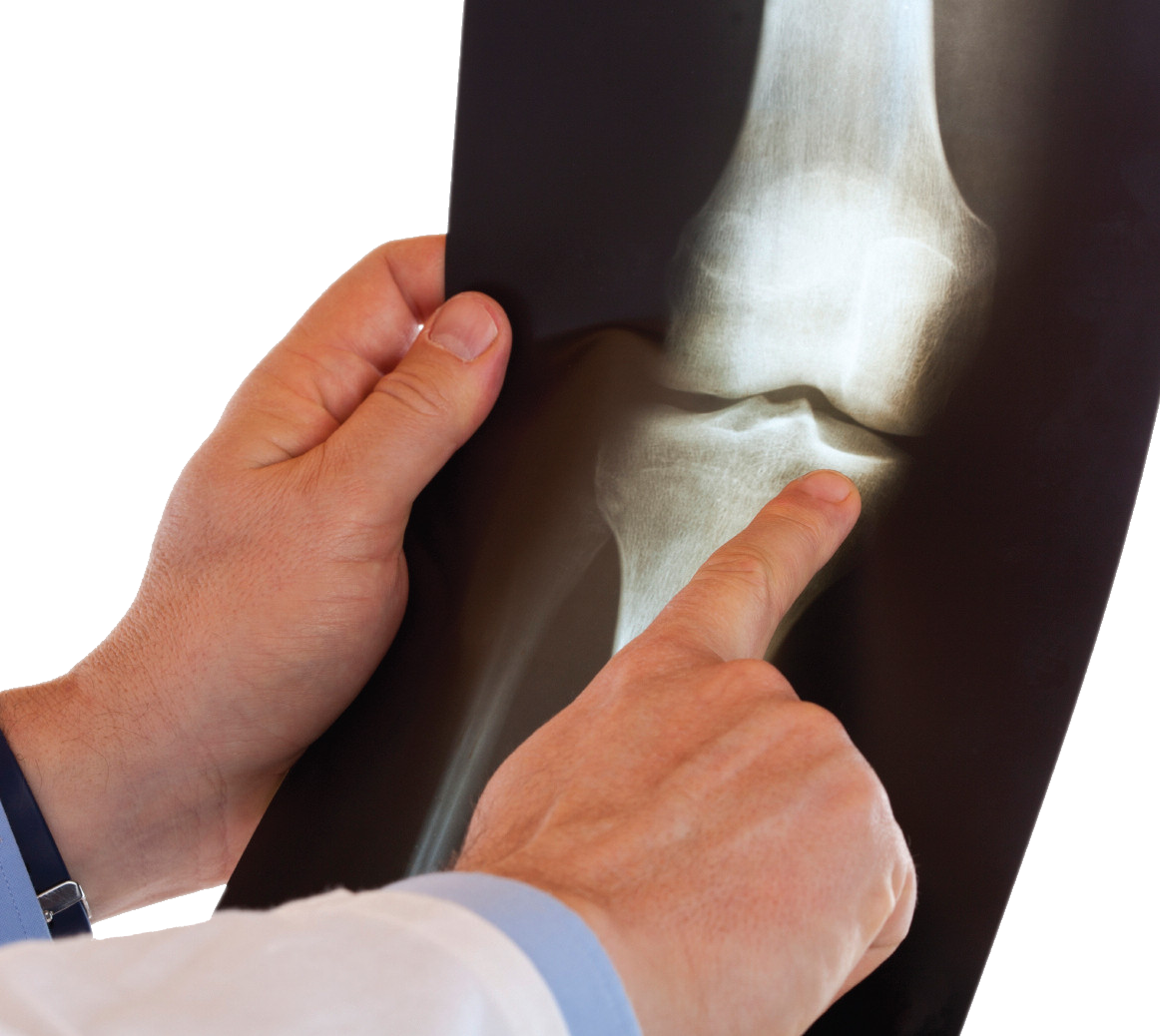Getting the measure of pain
In Clinical
Follow this topic
Bookmark
Record learning outcomes
When pain strikes, many customers who self-treat can often be dissatisfied with the results because they simply don't know that different types of pain need different approaches.
Learning objectives
After reading this article you should be able to:
- Understand the stories behind the headlines relating to analgesics
- Provide accurate and up-to-date advice to individuals seeking help for various painful conditions
Pain is one of the commonest reasons for a visit to a community pharmacy, whether as one of the 14m people in the UK who live with pain every day, or as someone seeking relief from a painful but minor condition, such as a headache. In this feature we look at a series of scenarios that explore some topical questions about this therapeutic area.
Diclofenac confusion
 Harriet Yelland, a 28-year-old teacher at the local primary school, approaches the counter with a query.
Harriet Yelland, a 28-year-old teacher at the local primary school, approaches the counter with a query.
€I was at the supermarket on Sunday and tried to get some diclofenac tablets from the pharmacy there, but they told me they didn't sell them any more. It was really busy and I didn't want to get into an argument with the girl on the counter, so I thought I'd come here. Have you got any? I don't take them very often, but occasionally I use them when my period pains are really bad and nothing else is working.€
OTC diclofenac was withdrawn in January this year because of an association with a small but increased risk of serious cardiac side-effects in some patients. Given that Harriet takes the NSAID infrequently and experiences relief of her dysmenorrhoea at the low dose that was available to purchase, she is unlikely to be affected by this. However, the discontinuation of the OTC pack means she is unable to obtain further supplies from a pharmacy as she has done in the past.
If Harriet is convinced that only diclofenac will work for her, she needs to make a GP appointment and undergo assessment to determine whether it continues to be a suitable option for her. If, on the other hand, she is open-minded about trying an alternative NSAID, ibuprofen or naproxen are both available OTC and are licensed for the relief of dysmenorrhoea. If NSAID monotherapy proves inadequate, paracetamol may be added.
Other measures that may help include heat treatments such as a hot water bottle and transcutaneous electrical nerve stimulation (TENS). If Harriet is not looking to become pregnant, a trial of hormonal contraception may be worth starting, although, again, this requires a trip to the GP or local contraception clinic.
For more information
- The MHRA announcement on the withdrawal of OTC diclofenac, including the letter sent to health professionals at the time, can be seen at gov.uk/drug-device-alerts/drug-alert-oral-diclofenac-presentations-with-legal-status-p-reclassified-to-pom
- NHS Choices information about contraception clinics can be accessed at: nhs.uk/Conditions/contraception-guide/Pages/contraception-clinic-services.aspx
Questions about paracetamol
 Lydia Soames, a 36-year-old mum of two, has been suffering with lower back pain off and on for a number of months, and although she has been to the GP, tests have proved inconclusive. She has been managing the pain using paracetamol and heat treatments. €I read an article last night that said paracetamol wasn't very good for back pain and is quite a dangerous drug to be taking regularly,€ she says.
Lydia Soames, a 36-year-old mum of two, has been suffering with lower back pain off and on for a number of months, and although she has been to the GP, tests have proved inconclusive. She has been managing the pain using paracetamol and heat treatments. €I read an article last night that said paracetamol wasn't very good for back pain and is quite a dangerous drug to be taking regularly,€ she says.
€I'm running low so had planned to pop in today to pick up some more, but now I'm confused as to whether I should be taking it at all.€ The article Lydia read refers to research published in the British Medical Journal earlier this year, which concluded that paracetamol appeared ineffective in the treatment of low back pain and provided only minimal short-term benefit in osteoarthritis. The study analysed data from 13 randomised placebo-controlled clinical trials, only three of which were concerned with lower back pain and were limited to specific patient groups, and two of these involved very small numbers of participants (less than 150 in total).
Current guidance published by NICE recommends paracetamol as the first choice of analgesia for people with persistent or recurrent back pain (alongside other measures such as staying active) because it is considered relatively safe in terms of side-effects. However, a shadow was cast over this last assertion by another BMJ paper published earlier this year, which raised concerns about the risks of the drug when taken on a long-term basis. Again, the paper reviewed existing studies, and found a dose-related link between paracetamol and increased incidence of mortality and cardiovascular, gastrointestinal and renal adverse events, although the overall risk of such problems occurring remained small.
The most sensible course of action for Lydia is to carry on managing her back pain as she has been doing, because she seems to be benefiting from it and the risks of adverse effects are relatively low. Furthermore, her GP is aware of what she is doing and is regularly reviewing her condition.
For more information
- The BMJ paper on paracetamol and back pain is open access and can be viewed at: bmj.com/content/bmj/350/bmj.h1225.full.pdf
- The study on the adverse effects of paracetamol is available to BMA and OpenAthens members and BMJ subscribers only at: bmj.com/content/350/bmj.h1186. >> A precis, written by the University of Leeds team that conducted the study, can be accessed at leeds.ac.uk/news/article/3669/long-term-risks-of-taking-paracetamol-may-have-been-underestimated-by-clinicians
- The NICE guidance on the management of persistent lower back pain can be viewed at: nice.org.uk/guidance/cg88. It is currently under review, with the revised publication anticipated for the end of next year.
Key facts
- Paracetamol remains the first choice drug option for lower back pain
- Ibuprofen and naproxen may prove useful for those who have used OTC diclofenac in the past
- Opioid addiction is rare in terminally ill patients so should not delay the use of these drugs in end-of-life care
- Paracetamol and ibuprofen can be used concurrently, and ibuprofen can sometimes be used €“ albeit cautiously €“ by people with asthma

ô€€€
The OTC analgesics category continues to grow
Concerns about opioids
Mark Kettlewell has been a regular customer recently as his father has been unwell and has required various medicines, which Mark collects on his behalf. You notice he seems upset. €Dad has cancer and it has gone too far for chemo or radiotherapy,€ says Mark.
€Obviously we are going to keep him in his own home for as long as possible, but the doctor is already talking about hospice care, so I don't think he has long. He's not in pain at the moment, but I know it is going to come. Could you talk me through the options for when that happens? Dad is already saying that he won't take morphine because he's worried about getting hooked on it.€
In palliative care, pain management is focused on controlling pain by giving the patient the right dose of the right drug at the right time. For mild pain, often paracetamol or an NSAID given regularly is enough, with an opioid analgesic such as codeine or tramadol either added or substituted as the pain progresses. While morphine is the mainstay of severe pain management, there are several alternatives such as oxycodone, buprenorphine and fentanyl, the latter two having the advantage of not needing to be taken orally.
Adjuvants may also be used, depending on the type of pain being experienced; for example, a bisphosphonate can help alleviate pain resulting from bone metastases, while a tricyclic antidepressant or antiepileptic may be employed if neuropathic pain is a problem. Fears about addiction should not delay the administration of an opioid analgesic for a terminally ill patient who is in severe pain. If prescribed appropriately and taken as directed, the risk of addiction is very low because the patient is unlikely to experience any of the feelings of euphoria that those with psychological dependence strive to emulate.
Furthermore, the chance of tolerance developing €“ which some fear will lead to ever-increasing doses or breakthrough pain if a lower dose is given €“ is also small. While patients certainly become accustomed to opioids in terms of their side-effects, the same is not true of the analgesic effects themselves.
For more information
- The British National Formulary's section entitled 'Prescribing in palliative care' is a good source of topline information on pain management in terminally ill patients, and can be accessed by subscribers at: medicinescomplete.com/mc/bnf/current
- Cancer Research UK's website has a useful page on this common issue at: cancerresearchuk.org/about-cancer/coping-with-cancer/coping-physically/pain/treatment/barriers-to-treating-pain
Double dosing doubts
 Iain Mottram, a 60-year-old retired teacher, has just come from the GP surgery where he was seeking advice about his painful knee.
Iain Mottram, a 60-year-old retired teacher, has just come from the GP surgery where he was seeking advice about his painful knee.
€I've had x-rays and tests, and it looks as though I will need a knee replacement in a few years, but the specialist recommended I try simple painkillers and go back to him when my arthritic knee starts to stop me walking the dog and doing other things I like to do. I've been using paracetamol as and when I need to but the GP suggested taking ibuprofen as well. What do you think? I've taken it before without any problems, but I realised recently that maybe I shouldn't have because of my asthma.€
In osteoarthritis, regular paracetamol dosing is considered more effective than taking it on an ad hoc basis, so this should be Iain's first plan of action, in addition to what NICE describes as €core treatments€ such as losing weight if he is overweight or obese, undertaking strengthening and aerobic fitness exercise, and the use of hot or cold packs. A topical NSAID can be used as a substitute or to supplement the paracetamol if needed, assuming Iain has no contraindications to NSAID use such as active or recurrent gastrointestinal ulceration or bleeding, and topical capsaicin is also worth considering. If the combination of paracetamol and a topical NSAID starts to become ineffective, an oral NSAID may help reduce pain and stiffness, as shown in a study published in the journal Annals of Rheumatic Disease.
Ibuprofen is a good choice as it has fewer side-effects than other nonselective NSAIDs, although this has to be balanced against the drug's weaker anti-inflammatory properties. If Iain needs to use both agents, taking them alternately €“ being mindful that paracetamol can be taken four times a day compared to ibuprofen's three-times daily dosing schedule €“ may be helpful, in which case it is sensible to take ibuprofen with or after food to reduce the incidence of GI side-effects, with the paracetamol doses slotted in between meals.
If Iain gets to the stage of needing regular pharmacological management of this type, however, he should return to his rheumatologist. With regards to Iain's asthma, if he has taken ibuprofen in the past without experiencing an exacerbation, the link between the drug class and the condition should be treated as a caution rather than a contraindication. If Iain is happy to do so, he could take it as described above, but bear in mind that any asthma symptoms he experiences may be attributable to the treatment and are a reason for stopping it.
For more information
- The study published in Annals of Rheumatic Disease can be accessed at: ard.bmj.com/content/70/9/1534.full
- NICE guidance on osteoarthritis, which describes the stepwise approach to management outlined in this scenario, can be viewed at: nice.org.uk/guidance/cg177/chapter/1-recommendations
- For patients, NHS Choices has a page dedicated to answering the question €Can I take paracetamol and ibuprofen together?€ at: nhs.uk/chq/Pages/857.aspx?CategoryID=73
- The introduction to BNF chapter 10.1.1 is a good source of information on cautions and contraindications to NSAID use and can be accessed by subscribers at: medicinescomplete.com/mc/bnf/current
- Information on NSAIDs and asthma for patients can be found on Asthma UK's website at: asthma.org.uk/knowledge-bankmedicines
Painful Reading
- Pain is the largest OTC category, with £543.9m spent on analgesics in 2013, a 2 per cent increase on the previous year, according to IRI data
- Adult oral analgesics accounted for sales of £353.4m, with a further £74m spent on pain relief products for children
- Fourteen million people in the UK are living with pain, says Pain UK, an alliance of charities set up to provide a voice for people in pain
- Back pain is costing the Exchequer an estimated £5bn a year, according to the British Pain Society
- The Trade Union Congress says some 4.9m work days are lost to British businesses because of work-related back pain
- Over 42m prescriptions were dispensed last year in England for non-opioid analgesics and compound preparations at a net ingredient cost of over £190m, according to prescribing cost analysis data published by the Health and Social Care Information Centre
- In terms of opioid analgesics, over 22m prescriptions were dispensed at a cost of £304m (although this includes methadone)
- More than 15m NSAID scripts were dispensed, costing over £75m

